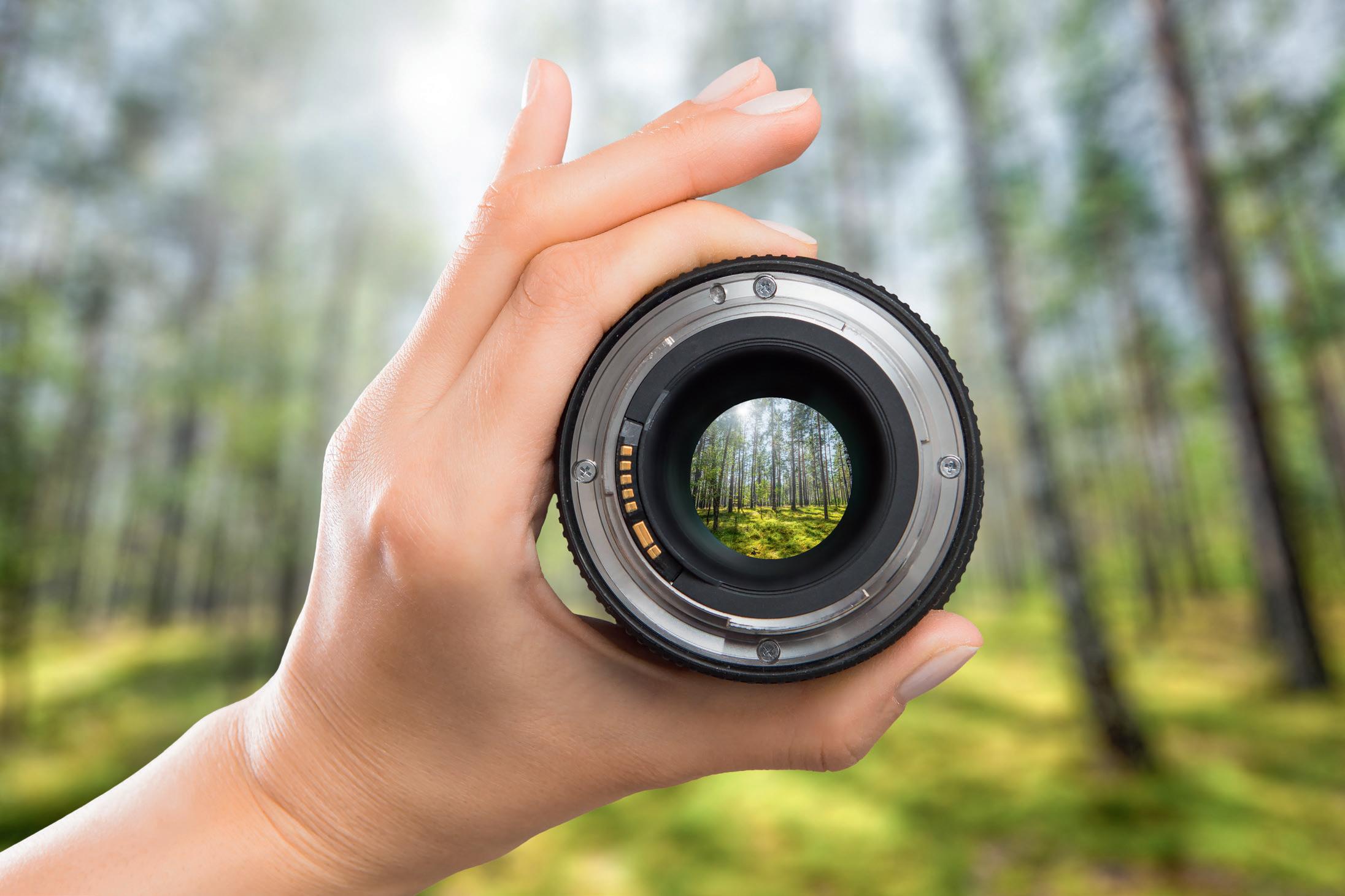
9 minute read
SCORES GO HIGHER WHEN YOU FOCUS AND FIRE
More than a decade ago, my good friend Tracey Ashton, who is an avid clay target shooter living on the Gold Coast in Queensland, Australia, asked me how she was supposed to focus on the target. Her query made me realize that my command to “focus on the target” means different things to different shooters.
Prior to Tracey’s question I had never really given much thought to how my eyes focused on the target.
Advertisement
I just knew when I didn’t focus hard enough before I fired the shotgun, I usually had a weak break or completely missed the target. Eventually, I came to realize that I watched each clay target until it approached my intended break point, and then I would just hard focus and fire! This article explains why this focusing strategy works!
Watching During the Shot Sequence
I introduced four specific elements of the shot sequence in my second book, A Method for the Magic. The four elements are: detection, acquisition, tracking, and engagement. The shot sequence begins when the shooter settles his or her eyes in expanded soft focus in the acquisition (look) zone, and it ends when the eye transitions to hard focus in the break (engagement) zone as the shotgun fires.
While a shooter consciously watches the clay target continuously it is important to understand that the shooting eye will naturally transition from soft focus to hard focus on the clay target unless it becomes distracted. When the shooting eye begins in expanded soft focus it will naturally detect and acquire the target in the acquisition zone. A shooter can accomplish this by simply looking with curiosity. By curiosity I mean to say, “I wonder where this target will go?” After it acquires the emerging target the shooting eye uses its central vision to track the target continuously. The tracking data sent to the visual cortex allows the shooting reflex to synchronize muzzle speed to target speed on the way toward the break zone. Finally, the shooting
BY JOHN D. SHIMA
eye intensifies focus on the target as the muzzle engages it in the break zone, and the shotgun fires, while the shooting eye watches the target break.
Unfortunately, too many clay target shooters don’t trust their natural vision to function automatically. This is why it is necessary for me to explain to shooters how their eyes naturally react to moving objects, and how the muzzle of a loaded shotgun becomes a distraction that alters their perception of reality.
Peripheral visual fieldPeripheral vision is designed to detect a moving object and instantaneously determine its speed, direction and distance. This is a protective mechanism that enables all mammals to ascertain whether the moving object is a potential threat. The oval shape of the peripheral visual field is wider horizontally than vertically. By allowing the emerging clay target to move through the peripheral visual field toward the central visual field at the eye hold, the shooter’s visual perception is enhanced, and acquisition of the target by the central visual field of the shooting eye is optimized.


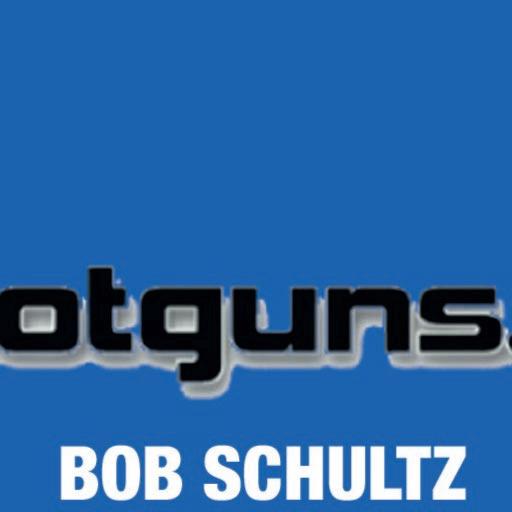


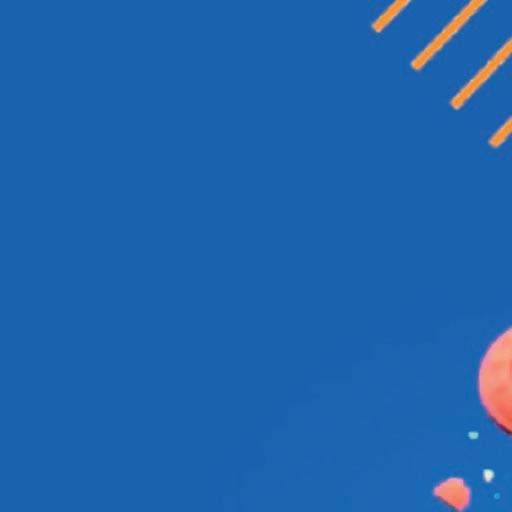



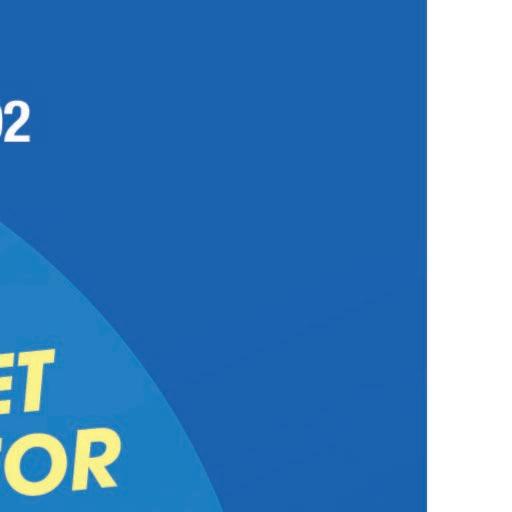


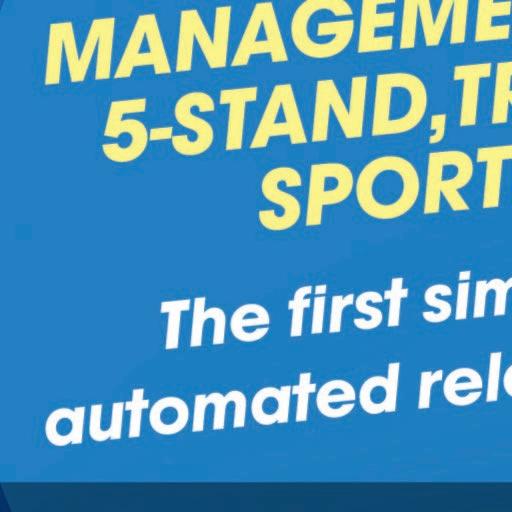



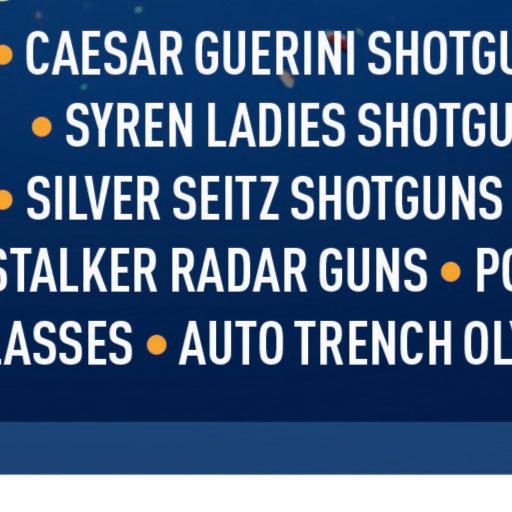
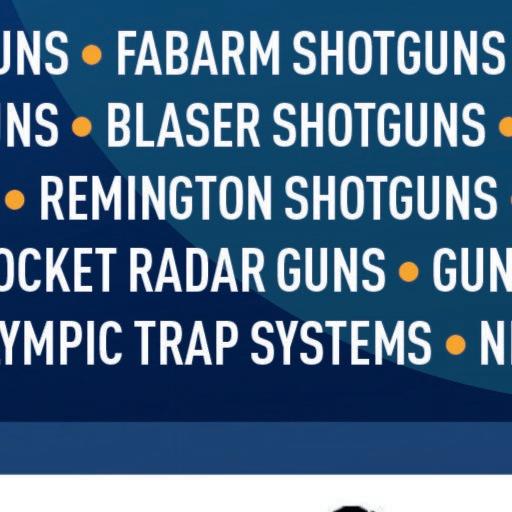
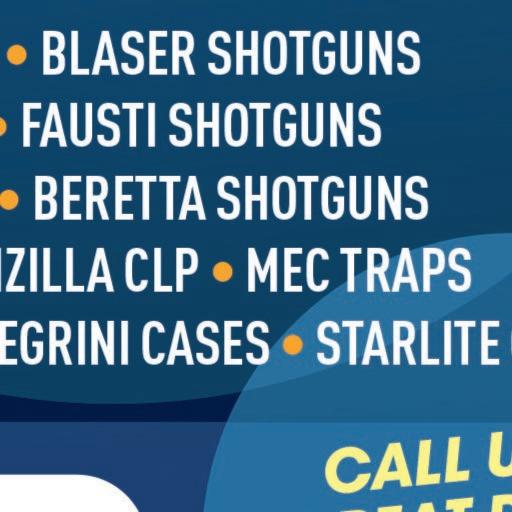



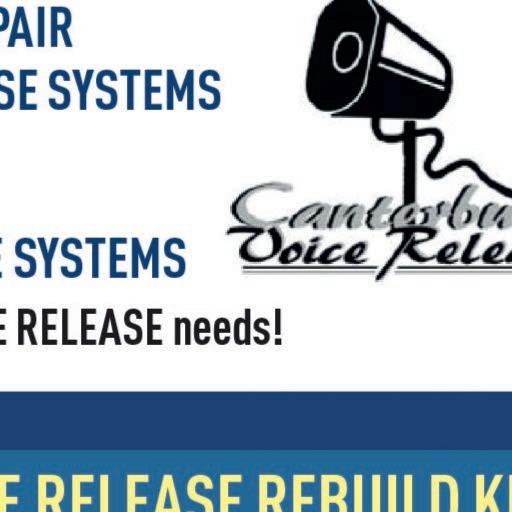




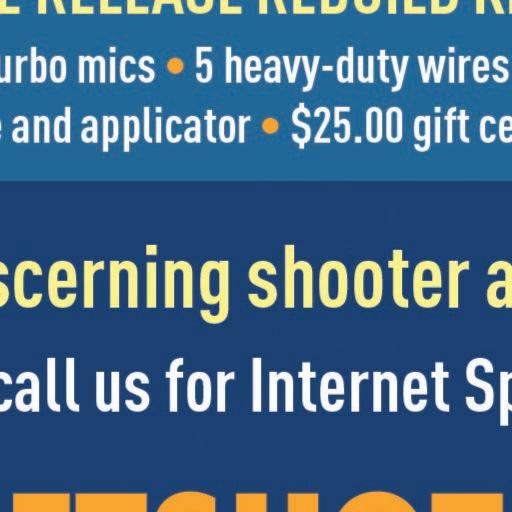
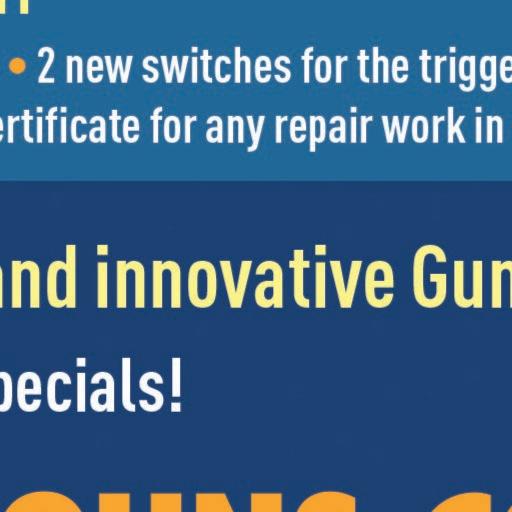



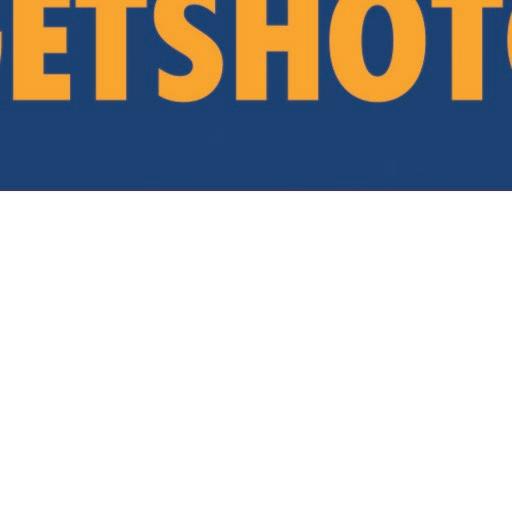

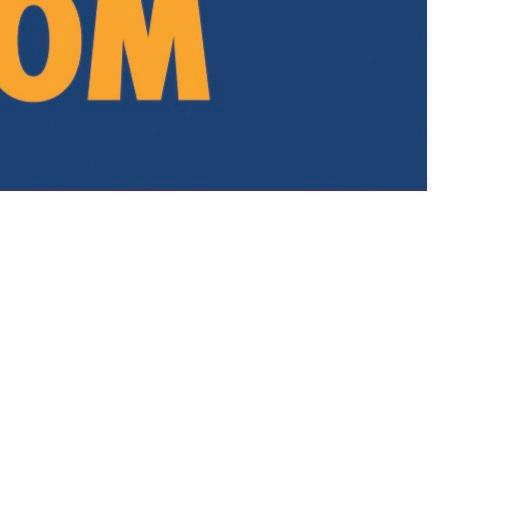
Central visual field - Central vision is designed to acquire a moving object, identify specific features on it, and track it during flight. Therefore, any attempt to hard focus too soon on an emerging target will compromise the shooting eye’s natural visual perception, and it will delay proper acquisition of the target. When the shooting eye is confronted with simultaneously watching two moving objects, such as a clay target in the distance and the end of the muzzle just three feet away, the eye’s natural tendency is to direct its central visual focus on the object that is largest, fastest, and closest - the muzzle of the shotgun.
Types of Visual Focus
I believe most shooters assume their eyes work just like the focus of an eye-cam. They just look for the target, and whatever they see is the picture they get. A few years ago, I introduced the two types of visual focus that clay target shooters tend to adopt: blended focus and absolute focus.
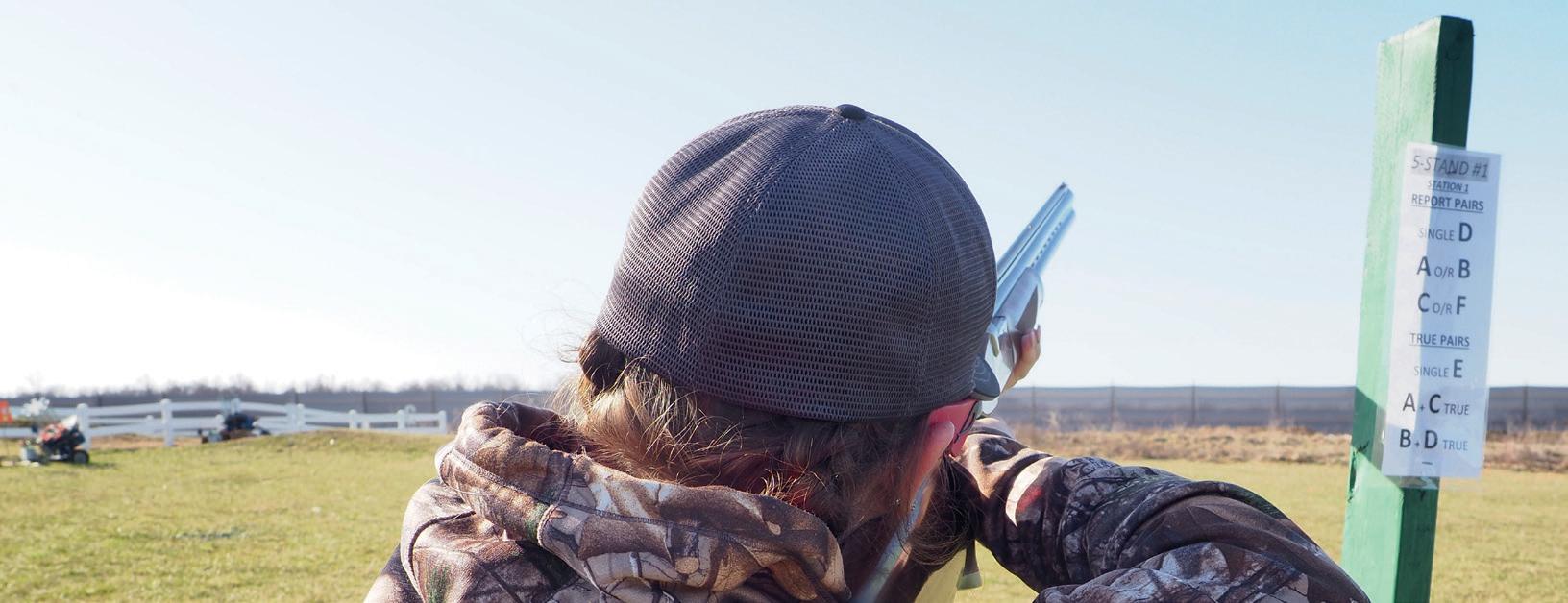
Blended focus - I also call this “shared focus” because the shooting eye sees the clay target and the end of the muzzle simultaneously. This “blended picture” may be continuous or intermittent. It is continuous when the shooting eye remains in soft to medium focus and both objects remain in blended focus continuously. It is intermittent when the shooting eye switches its primary focus back and forth from the clay target to the end of the muzzle. This causes the muzzle to jump or causes a flinch.
Absolute focus - When I use the term absolute focus, I am inferring the shooting eye acquires the target and centers primary central focus on it continuously during its flight. The secondary central focus of the shooting eye is barely aware of the end of the muzzle because it is slightly out of focus in the foreground of the central visual field. Essentially, the blurred image of the muzzle seems to “sneak” into the picture as the target nears the break zone. I call this visual phenomenon muzzle awareness.
Features of Visual Distraction
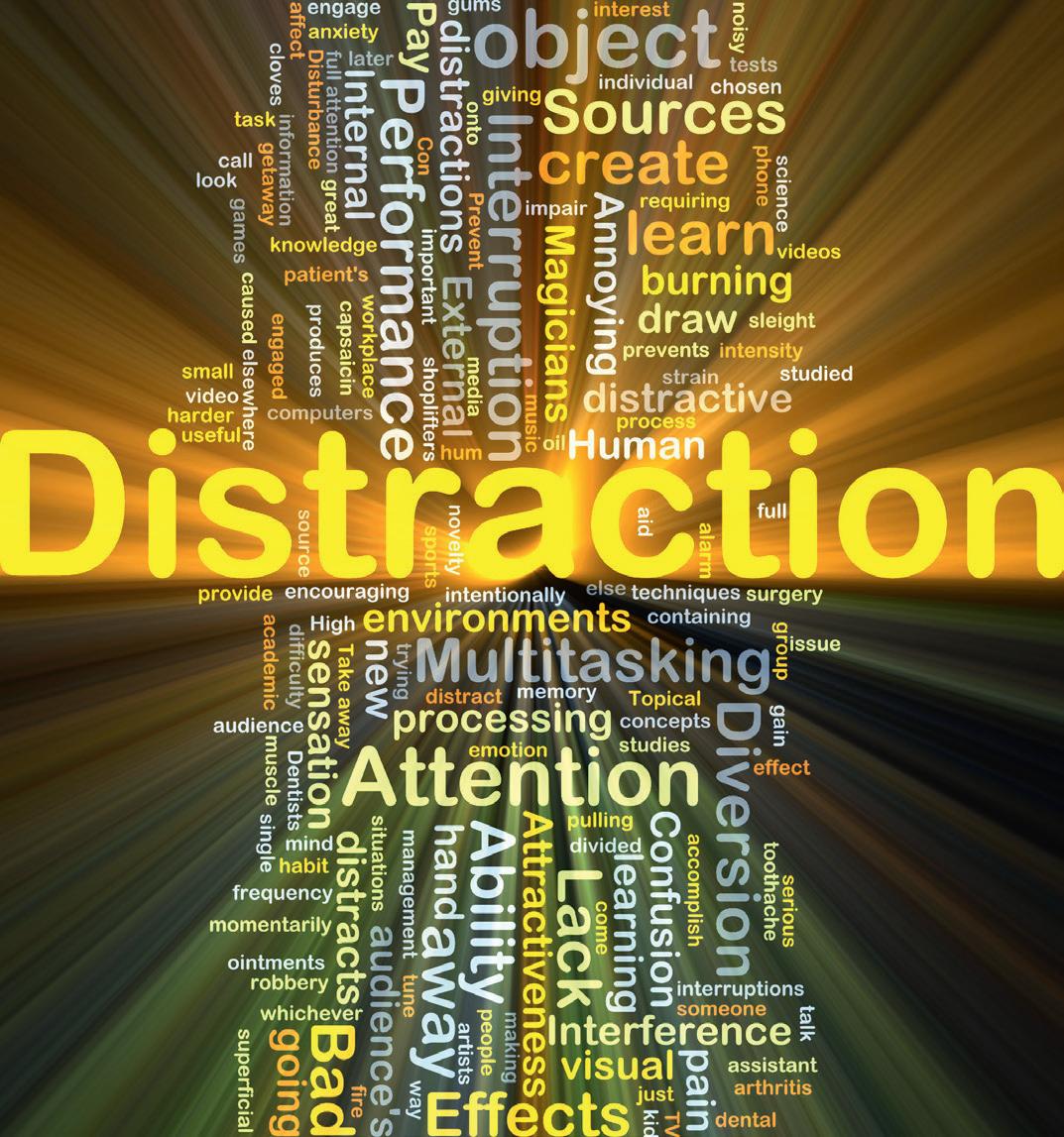
The human eye will naturally detect, acquire, and track a single moving clay target without any difficulty. However, the eye becomes easily distracted from watching the clay target continuously when a shooter attempts to focus on the target while looking over the muzzle of a loaded shotgun with the intention to break the target.
There is no doubt that emotions play a dominant role in visual distractions. Hence, visual distractions were a significant feature in my first book, The Moment of Truth: How We Look Determines What We See. I explained that most experienced shooters miss clay targets because their shooting eye perceives an optical illusion rather than physical reality during the flight of the clay target.
The expression, “the hand is quicker than the eye” explains how early magicians were able to perform impressive card tricks. Contemporary illusionists, like Harry Houdini, Siegfried and Roy, and David Copperfield, perfected the art of visual distraction to perform their impressive magic acts. The target setters at sporting clays venues also rely on optical illusions to alter the shooters’ visual perception of various clay targets. I find that shooters who improve their ability to consciously control their depth of focus and intensity of focus while watching clay targets actually become less susceptible to most intended and unintended visual distractions.



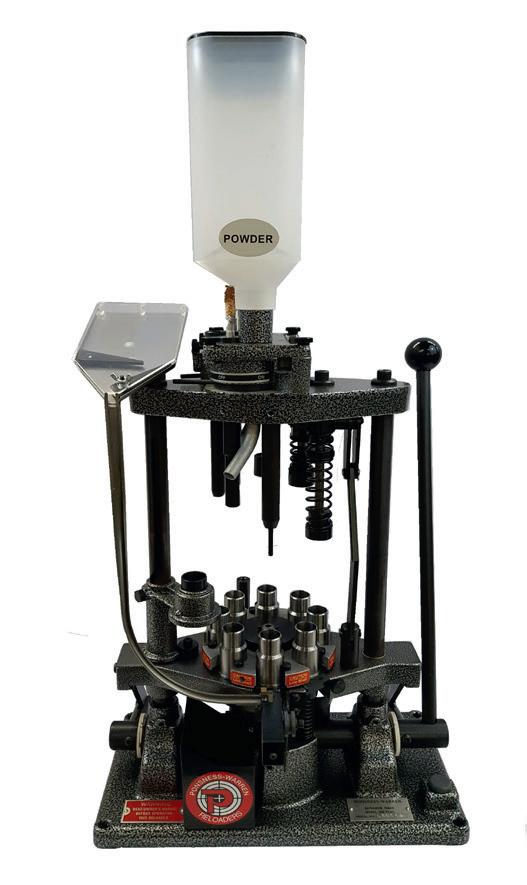

Depth of focus - Binocular vision is necessary to achieve true depth of focus. This seems to work well when targets are beyond 30 yards. I use the term “depth of focus” like a photographer uses the lens of a camera. In this context depth of focus is determined by the primary central focus of the shooting eye. During blended focus the depth of focus is somewhere between the clay target and the end of the muzzle. Shooters who use blended focus successfully maintain a consistent depth of focus that is much closer (75-90%) to the target than the end of the muzzle. Shooters who use absolute focus see only the target until it approaches the break zone. Shooters achieve absolute focus by directing their primary central focus onto a specific aspect of the target during tracking so their depth of focus is 100% on the target during its flight, and the secondary central focus becomes aware of the muzzle engaging the target as it approaches the break zone.
Intensity of focus - Proper management of the watching reflex involves transitioning of the shooting eye from expanded soft focus at the acquisition zone to intensive hard focus in the break zone. For example, the transition from soft focus to hard focus must occur quickly to fire the shotgun when the distance from the trap to the intended break zone is relatively short. Conversely, the transition from soft focus to hard focus will be more gradual when the distance between the acquisition zone and the break zone is much greater. When the shooting eye intensifies its primary central focus onto a slower incoming target too soon, the “little hard focusing muscles of the eye” will fatigue before the target reaches the break zone, and primary central focus will switch from the target to the end of the muzzle.
Visual distractions - Although some visual distractions are intentionally introduced to a sporting clays venue by creative target setters the vast majority of visual distractions are due to environmental or emotional factors. Shadows, a cluttered background, and other environmental factors can compromise optimal visual acquisition of emerging clay targets. However, emotional issues that arise within the conscious mind of the shooter contribute to most visual distractions. I categorize these emotional issues as the tension of execution and the twinge of uncertainty.
The tension of execution is a form of performance anxiety that arises as the shooter prepares to call for the target. Rather than settling the eyes to quiet the mind and enter a state of awareness, the shooter becomes emotionally distracted by his or her self-talk. The shooter believes this selfcoaching will improve the odds of breaking the target. Unfortunately, it just activates working memory to take over the shot.
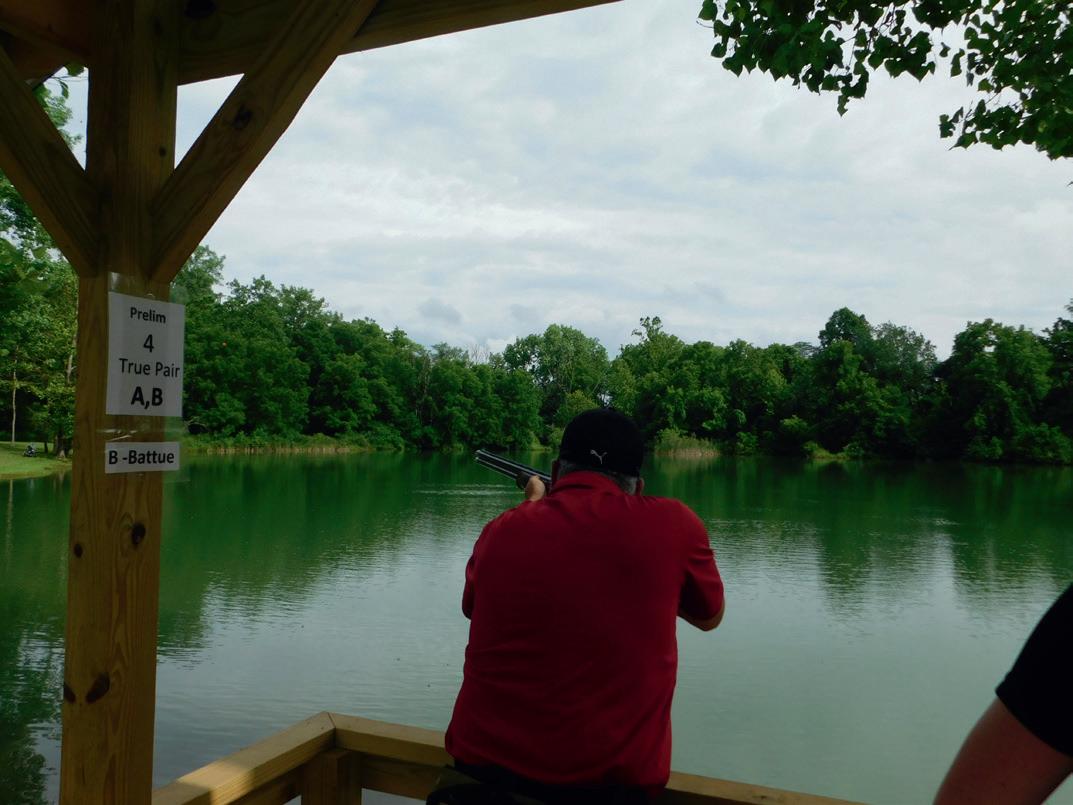
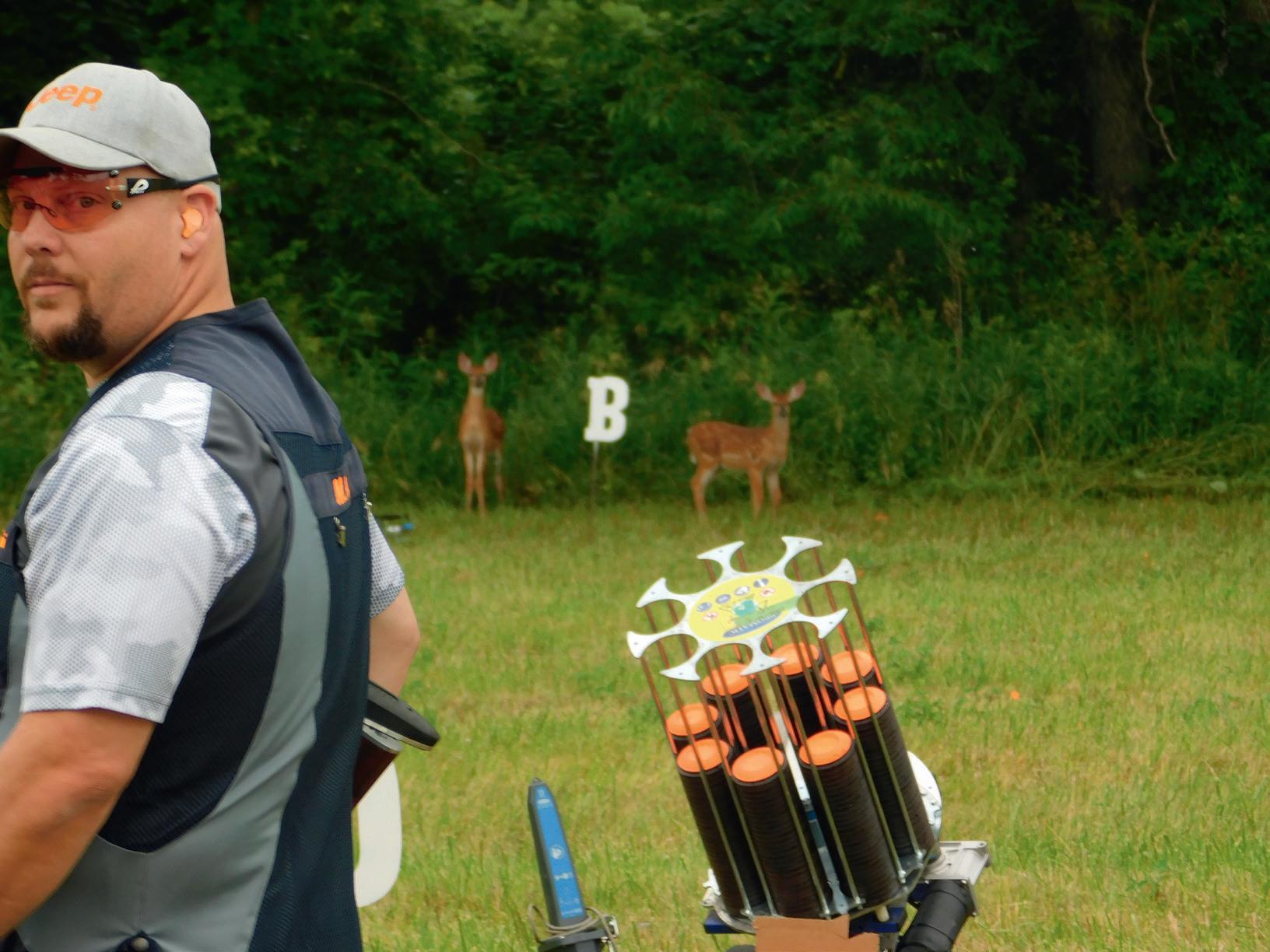
If the shooter starts with a quiet mind and acquires the clay target correctly the twinge of uncertainty could still creep into the shot. The momentary lack of trust in the preplanned move causes the shooting eye to defocus to “look for the muzzle” as the target enters the break zone. The twinge of uncertainty disrupts the automatic pre-planned move because it instantly shifts the depth of focus and point of focus of the shooting eye toward the muzzle, which abruptly alters muzzle speed.
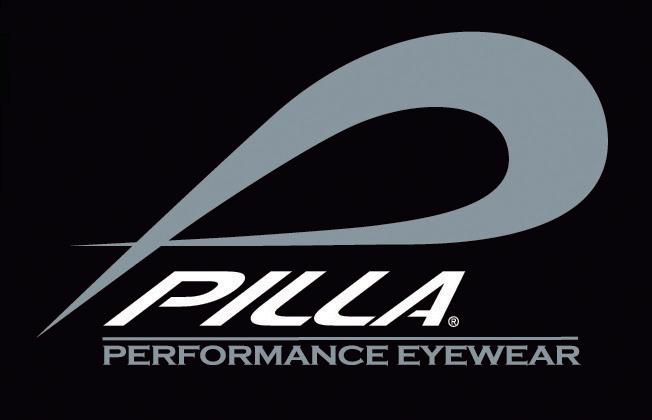
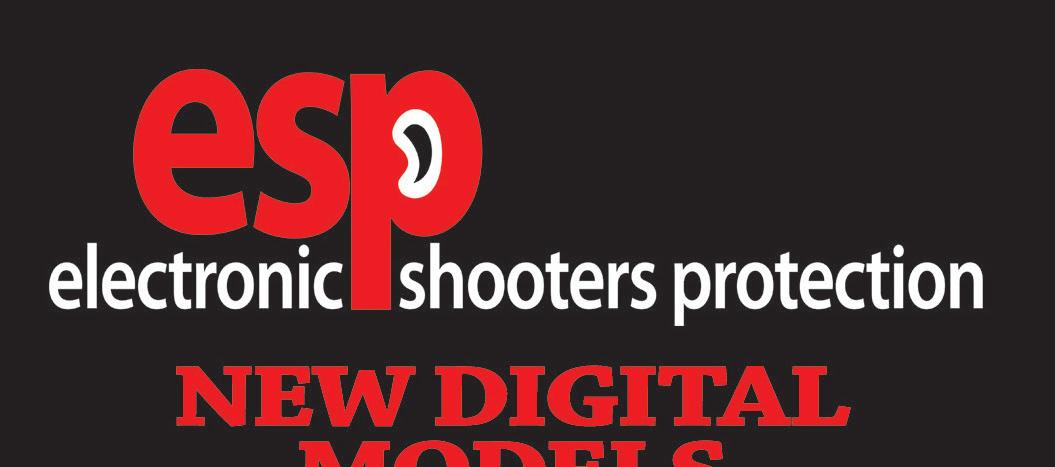
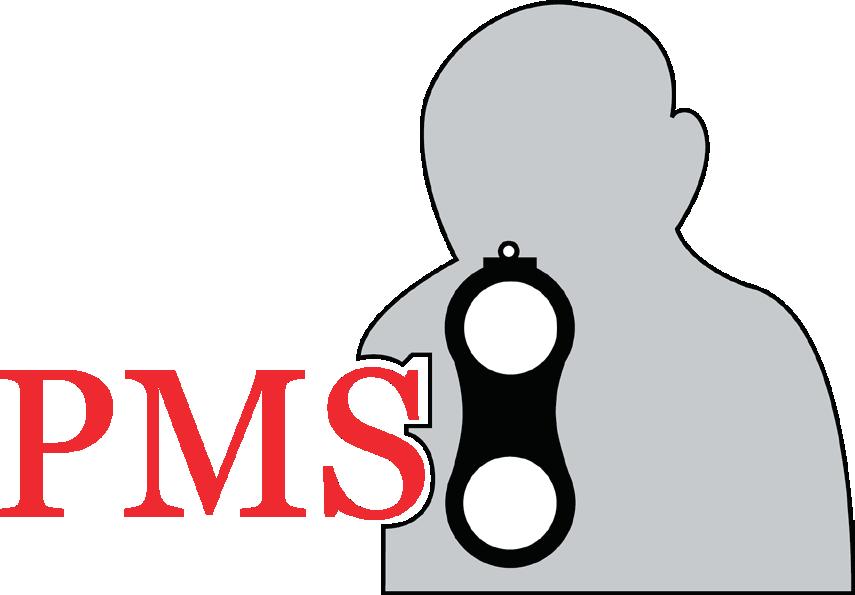
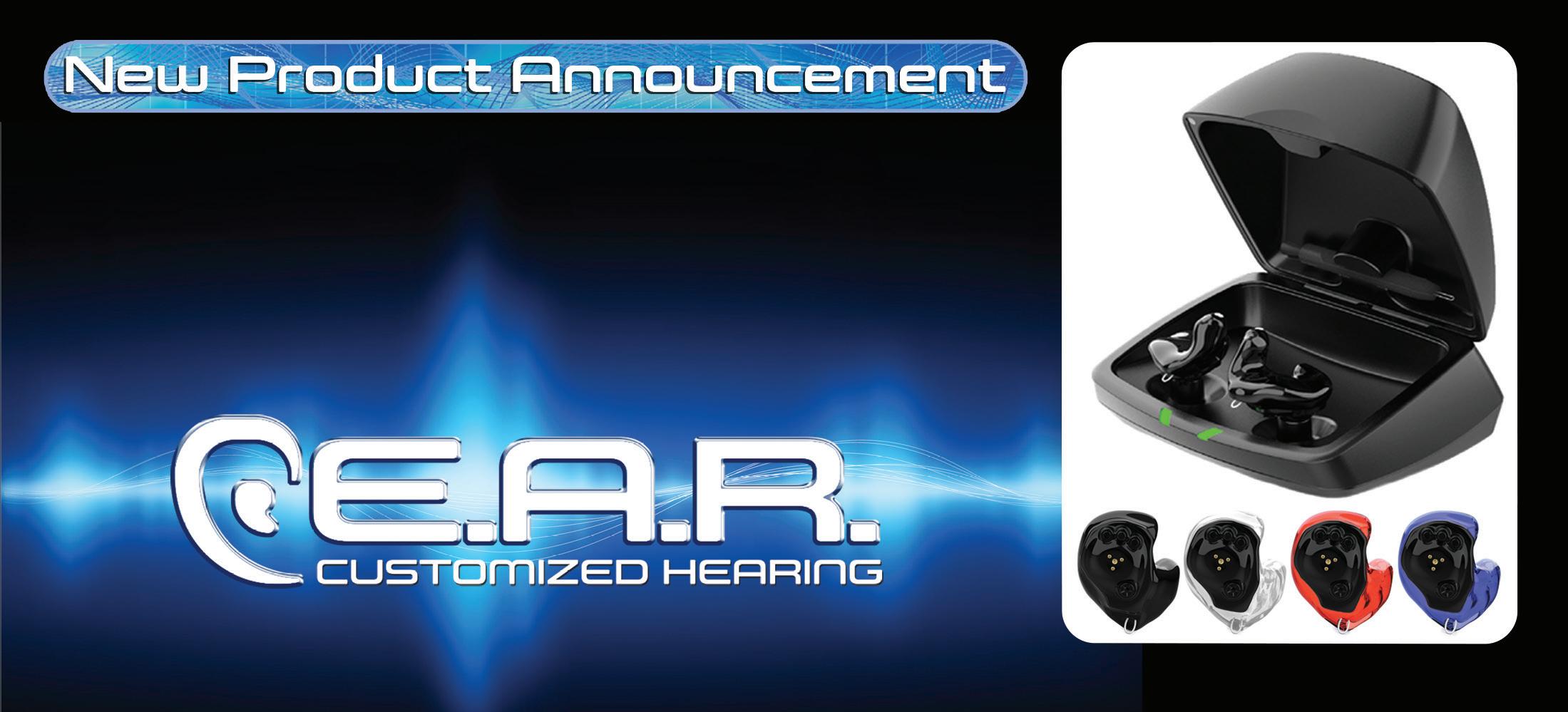
Focus and Fire Strategy
The ideal break point for every target should be determined during the pre-station routine. Determining the location of the ideal break point is a conscious, analytical process. The more knowledge a shooter gains through experience the more proficient he or she will become at analyzing target presentations to determine ideal break points for every target presentation.
I previously described this process in terms of the watching reflex and the shooting reflex. The shooter consciously controls the watching reflex while allowing the subconscious to manage the shooting reflex. This process would be monotonously simple if not for self-defeating visual distractions. I refer to these visual distractions as self-defeating because most of them are associated with factors a shooter can control: depth of focus, point of focus, and the timing of intensity of focus. Focusing too hard, too soon increases the incidence of visual distractions due to strain on the tiny focusing muscles of the lens. I call this focus fatigue.
Focus fatigue - The intention to hard focus on the target and fire the shotgun is a conditioned response that should be basically the same for every target as it approaches the ideal break point. The shooter’s commitment to hard focus and fire must occur the instant when the watching and shooting reflexes come together to engage the target with the muzzle of the shotgun in the break zone. Shooters who attempt to focus too hard, too soon deplete their hard focusing capacity, which usually causes the depth of focus of the shooting eye to switch from the distant target to the end of the muzzle. Mature shooters must be aware that the tiny intraocular muscles responsible for hard focusing on distant clay targets have a very limited capacity. Therefore, it is especially important for aging shooters to use their hard focusing capacity prudently.
Commit to the break pointThe most effective method for preserving focusing capacity and promoting automaticity is to commit to the break point for every shot. This strategy requires shooters to analyze the ideal break point for each target during the pre-station routine. Once on the station the shooter must patiently acquire each target in soft focus, and watch it continuously in medium focus until it approaches the break zone. And then, the shooting eye must instantly hard focus on a specific portion of the target while firing the shotgun.
When shooters commit to the focus and fire strategy it will eventually make a difference between good scores and great scores. The focus and fire strategy prevents the twinge of uncertainty from altering muzzle speed in the break zone and insures consistent outcomes.
Knowing why and when to hard focus and fire is an important first step toward adopting it as a good shooting habit. By committing to focus and fire at the break point during every practice session a dedicated shooter will eventually make it a consistent habit that he or she can trust during competition. n
John Shima is a former five-time World Skeet Champion and was high average in 12 gauge for two years. John is the leading authority on detection of visual deceptions and prescribing appropriate visual training to unleash the power of reality for clay target shooters. For more information about the Shima Shooting MethodSM, the Clinic Schedule, his new Shima Shooting ExperienceSM, or to arrange a Private Consultation, contact John via email at john@johnshima.com To order his books or view previous articles go to johnshima.com/ publications










